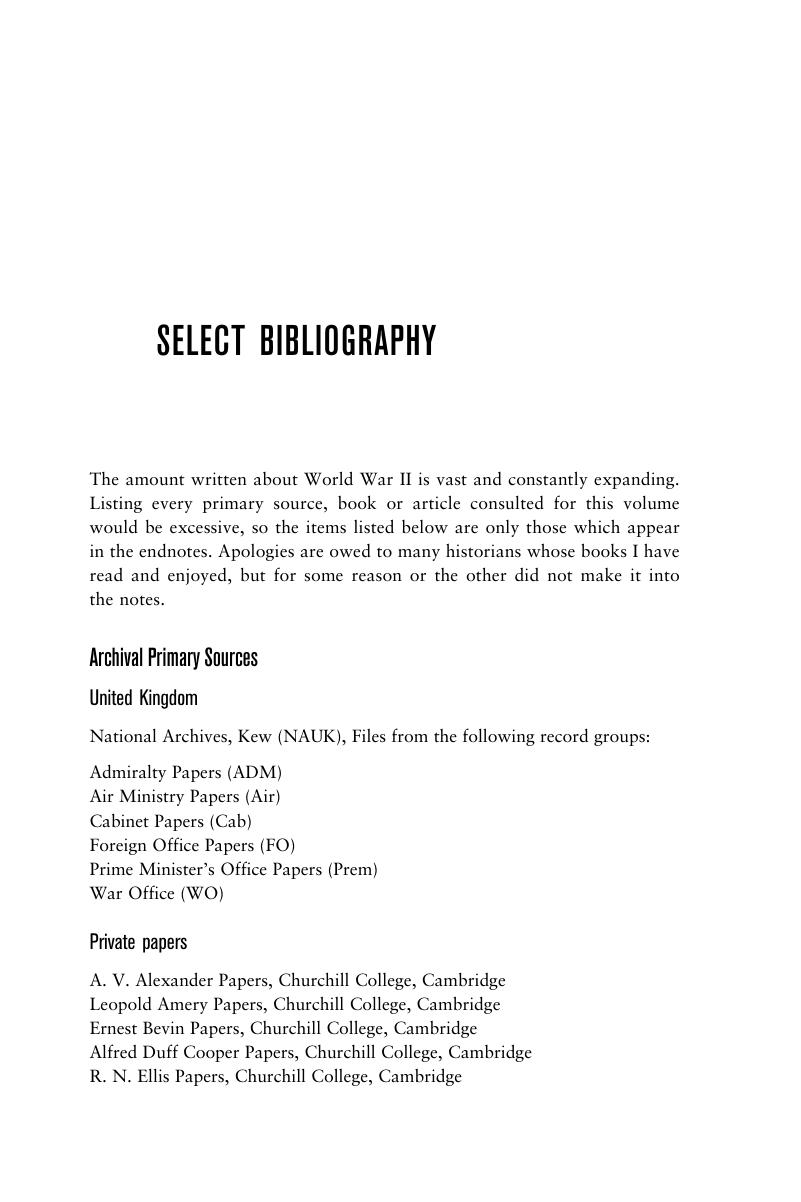Book contents
- Frontmatter
- Contents
- List of Figures
- List of Maps
- List of Tables
- Acknowledgments
- List of Abbreviations
- Map 1
- Map 2
- Map 3
- Map 4
- Map 5
- Map 6
- Map 7
- Map 8
- Introduction
- 1 The dominance of air and sea production
- 2 The air and sea war and the phases of equipment destruction
- 3 The air and sea war to November 1940
- 4 Grand strategists and the air and sea war
- 5 Understanding the air and sea war from December 1940 to March 1942
- 6 Grand strategy in action: prioritizing the air and sea war
- 7 Winning the shipping war
- 8 The war in Europe in 1943: strategic bombing and the land war
- 9 The war in Europe in 1944
- 10 The air and sea war against Japan, 1942–4
- 11 The end of the war
- Conclusion: the supremacy of air and sea power and the control of mobility
- Notes
- Select bibliography
- Index
- References
Select bibliography
Published online by Cambridge University Press: 05 February 2015
- Frontmatter
- Contents
- List of Figures
- List of Maps
- List of Tables
- Acknowledgments
- List of Abbreviations
- Map 1
- Map 2
- Map 3
- Map 4
- Map 5
- Map 6
- Map 7
- Map 8
- Introduction
- 1 The dominance of air and sea production
- 2 The air and sea war and the phases of equipment destruction
- 3 The air and sea war to November 1940
- 4 Grand strategists and the air and sea war
- 5 Understanding the air and sea war from December 1940 to March 1942
- 6 Grand strategy in action: prioritizing the air and sea war
- 7 Winning the shipping war
- 8 The war in Europe in 1943: strategic bombing and the land war
- 9 The war in Europe in 1944
- 10 The air and sea war against Japan, 1942–4
- 11 The end of the war
- Conclusion: the supremacy of air and sea power and the control of mobility
- Notes
- Select bibliography
- Index
- References
Summary

- Type
- Chapter
- Information
- How the War Was WonAir-Sea Power and Allied Victory in World War II, pp. 578 - 600Publisher: Cambridge University PressPrint publication year: 2015



